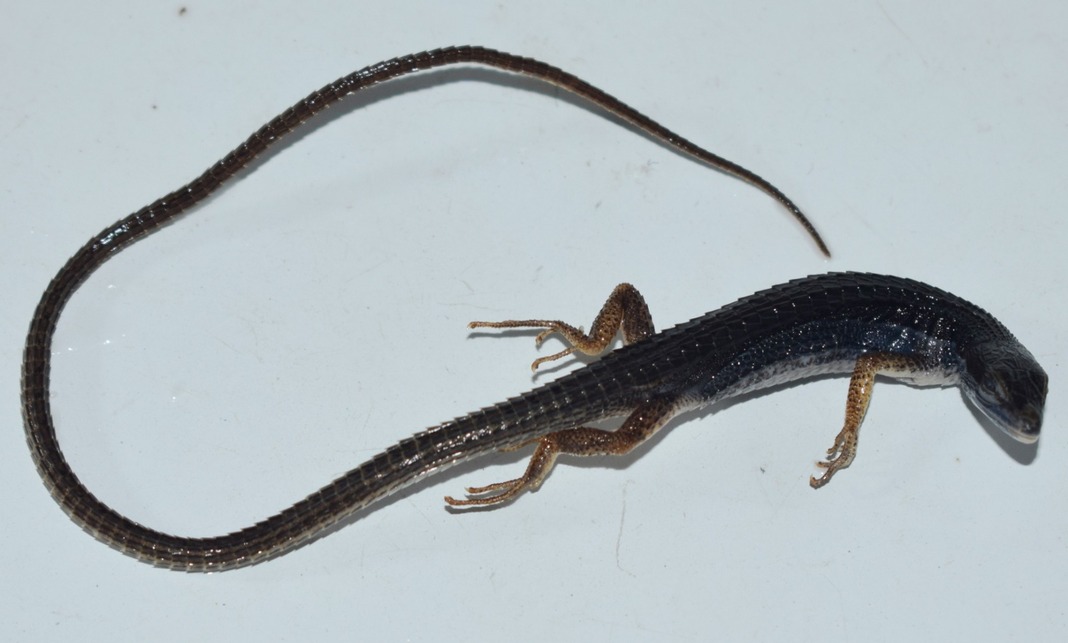ROOPAK GOSWAMI
Shillong, Dec 29: For nearly two decades, a mystery lay quietly in the collections of the Zoological Survey of India (ZSI) in Shillong—two specimens of a lizard, overlooked and unidentified, waiting for their story to be told. These unassuming reptiles, collected in 2005 from Nagaland’s Mon District, were recently identified as the Khasi Hills Long-tailed Lizard (Takydromus khasiensis), marking the species’ first confirmed presence in the state.
Takydromus khasiensis, a species was previously recorded in Meghalaya, Assam, and West Bengal, but not in Nagaland.
Their identification wasn’t just a routine catalogue update; it was a testament to how even the most overlooked specimens in museum archives can redefine scientific understanding. Hidden in plain sight, these lizards bridged a gap in the known range of the species, uncovering a new chapter in Nagaland’s rich ecological narrative.
The lizards were originally collected by Rosamma Mathew on 6 August 2005 during a survey along a subtropical forest trail near the Mon Forest Rest House in Mon District, one of the least explored regions in India. The specimens, carefully preserved in the ZSI archives (VR/ERS/ZSI/212 A–B), have now been formally identified and described in Reptiles & Amphibians journal. The study was authored by Sumidh Ray who works with ZSI in Calcutta.
” It was deposited in ZSI, Shillong. Last year we visited Shillong centre and identified the two specimens” Sumidh Ray who identified the specimen said.
Detailed examination revealed key morphological characteristics: keeled scales on their flanks, dorsal plates arranged in four longitudinal rows, and distinct dimensions, including snout-vent lengths of approximately 49.7 mm and tail lengths exceeding 150 mm. These features confirmed their classification as Takydromus khasiensis, a species previously recorded in Meghalaya, Assam, and West Bengal, but not in Nagaland.
This finding significantly expands the known range of the Khasi Hills Long-tailed Lizard, underscoring the biodiversity of Nagaland’s subtropical forests. It also highlights the critical role of museum collections in advancing scientific knowledge. Specimens like these, often overlooked, have the power to illuminate the hidden narratives of biodiversity and inspire further exploration.
Nagaland, with its unique and largely untapped habitats, may harbour many more such discoveries waiting to be unearthed.




